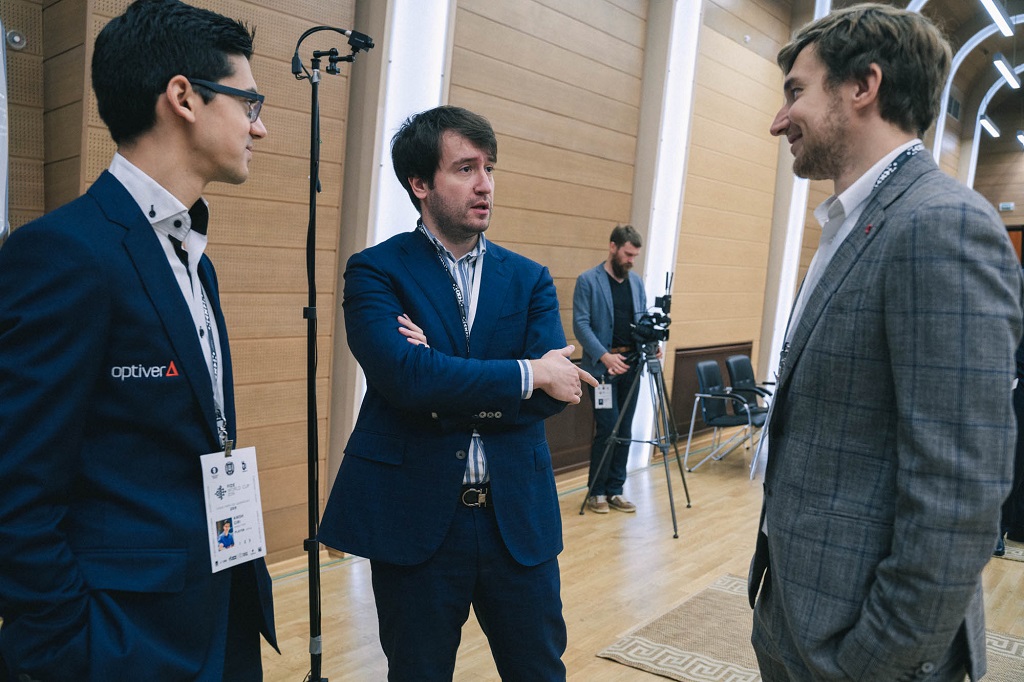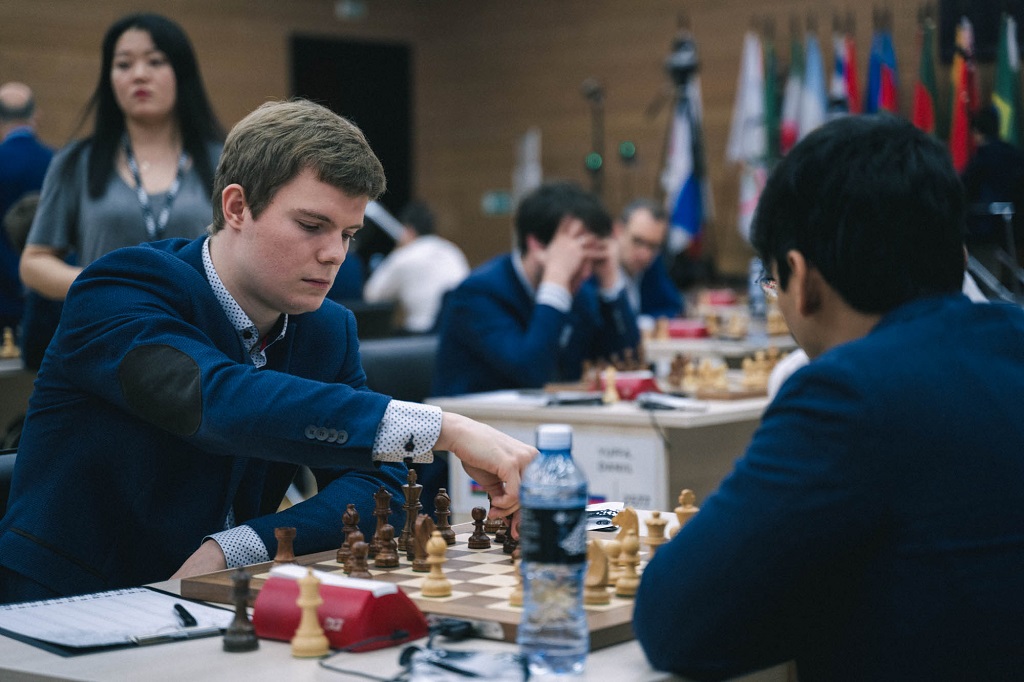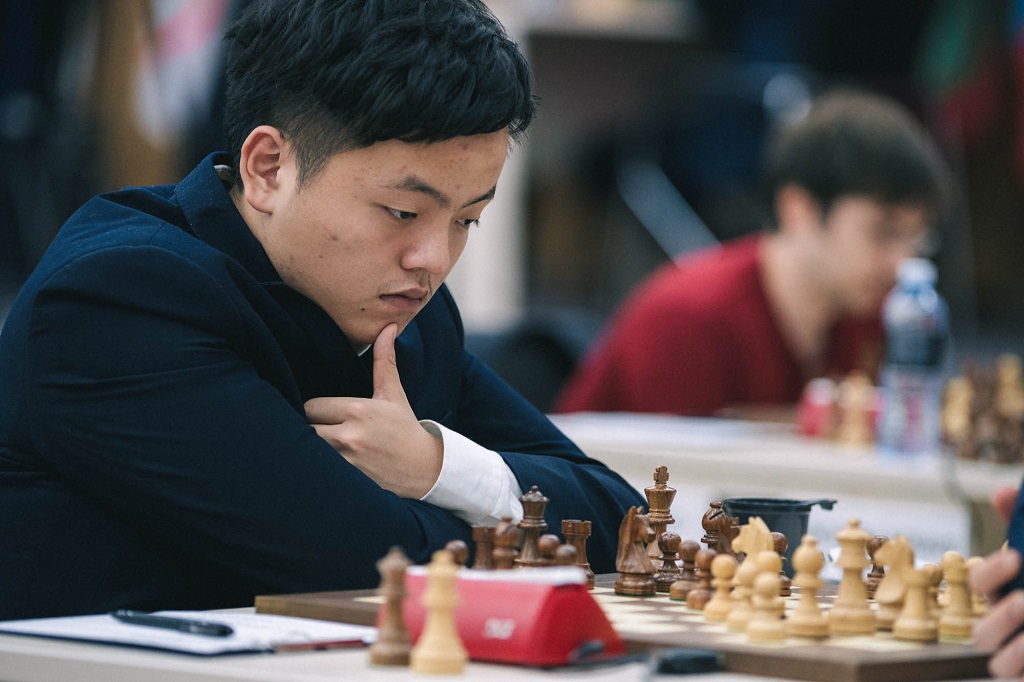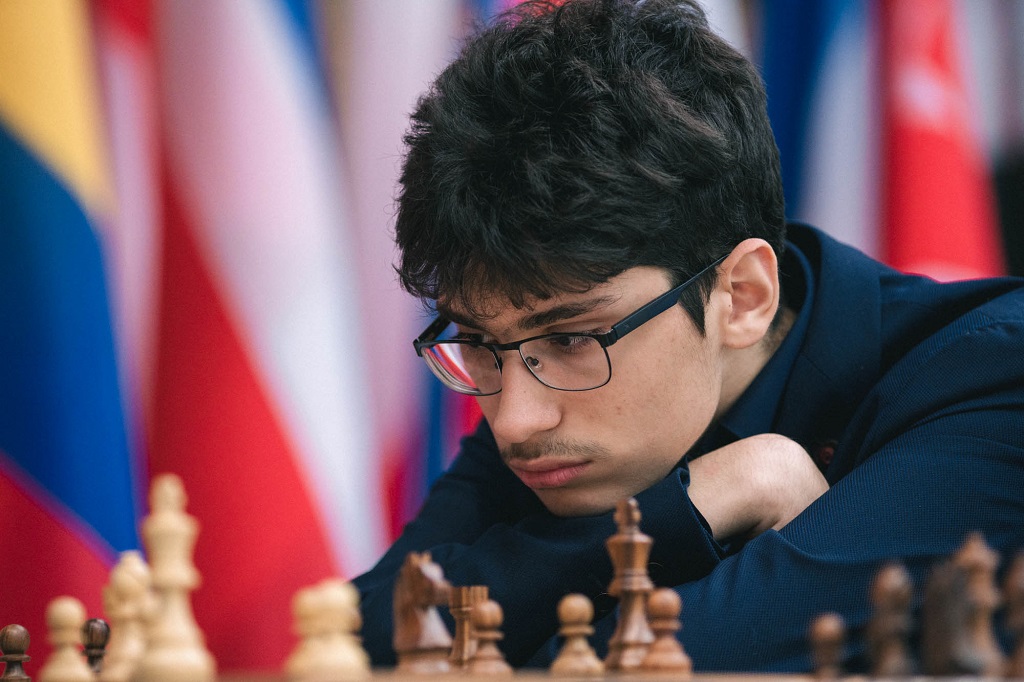


 The FIDE World Cup is taking place in Khanty-Mansiysk. It is a seven-round knock-out event for 128 players, with a total prize fund of US$ 1.6 million and a first prize of US$ 110,000. The matches consist of two classical games with a time control of 90 minutes for 40 moves plus 30 minutes for the rest of the game, with an increment of 30 seconds per move. The finals consist of four classical games. Full schedule.
The FIDE World Cup is taking place in Khanty-Mansiysk. It is a seven-round knock-out event for 128 players, with a total prize fund of US$ 1.6 million and a first prize of US$ 110,000. The matches consist of two classical games with a time control of 90 minutes for 40 moves plus 30 minutes for the rest of the game, with an increment of 30 seconds per move. The finals consist of four classical games. Full schedule.
Defending champion Levon Aronian is looking to get a third World Cup victory after having won the arduous event in 2005 and 2017. So far, the Armenian has reached round four without needing to play any rapid or blitz, as he defeated Essam El Gindy, Parham Maghsoodloo and now Maxim Matlakov in the classical phase of each match. On Tuesday, he got one of only three wins seen in Khanty-Mansiysk. Aronian will be facing either Le Quang Liem or Vladislav Artemiev in the fourth round.
The other two winners of the day only needed a half point to move on to the next round but ended up prevailing nonetheless. While Alexander Grischuk was a heavy favourite against Xu Xiangyu, Kirill Alekseenko impressed by eliminating Pentala Harikrishna, a player who has become a member of the elite the last couple of years or so. Grischuk and Alekseenko are two out of three Russians already in round four — Nikita Vitiugov has secured his spot as well, while the duel between Evgeny Tomashevsky and Ian Nepomniachtchi secures at least four local players will reach the round of 16.
Two pairings of round four have already been decided: Wesley So will face Vitiugov and Shakhriyar Mamedyarov is set to play against his compatriot Teimour Radjabov. All the participants that got a ticket to round four on the classical phase will enjoy two free days, as the first rest day (for everyone) is scheduled for Thursday.

Friendly colleagues — Anish Giri, Teimour Radjabov and Sergey Karjakin | Photo: FIDE
For a second World Cup in a row, Levon Aronian and Maxim Matlakok met in round three. In the last edition, the eventual champion only defeated the Russian in the blitz phase, getting a close 4½:3½ victory right before the Armageddon would be needed to break the tie. Back then, the players traded blows in the classical games, both winning with White in forty moves or fewer.
This time around, Aronian could not make the most of his white game, a tranquil 25-move draw, but chose an ambitious line with Black in the rematch. A turning point was reached on move 17:
There is no way to save the white knight, but Matlakov has a couple of alternatives to consider — instead of 18.dxe5, he could have gone for 18.d5 and would have got a slightly better version than the game...but that would be more relevant if we were talking about a game between computers. In actual fact, a complex position with a strange material imbalance ensued, as Black ended up with two knights for a rook and a pawn. Aronian coordinated his two pieces exemplary and got a winning position right before the time control:
White's rooks are highly constrained by a host of potential forks. Matlakov opted for 38.♖f2 here, which was responded by the centralizing 38...♞e4 — then the inevitable came, as 39.♖f5 fails to 39...♞d6, forking. Matlakov resigned.
.jpg)
Defending champion Levon Aronian | Photo: FIDE
A similar material imbalance was seen in the game that faced Pentala Harikrishna against Kirill Alekseenko, albeit in a different match situation. Harikrishna was in a must-win situation and had given up material to muddy the waters in the middlegame. But when the time control had passed, Alekseenko had consolidated his advantage, and there was little doubt about who would go through to the next round:
Harikrishna found the computer's first suggestion in a dismal position, 45.♖xb4. From that point on, Alekseenko was merciless in converting his advantage, pushing the passed c-pawn down the board until forcing his opponent to resign. The Russian grandmaster will play either Ding Liren or Alireza Firouzja in the round of 16.

Yet another strong Russian grandmaster — Kirill Alekseenko | Photo: FIDE
After winning a double-edged game on Monday, Alexander Grischuk got a dominant position in his rematch encounter against Xu Xiangyu. The Russian star highlighted the superiority of his pieces with a good-looking advance on move 24:
Grischuk executed what in the round-up show Erwin l'Ami calls the "Russian exchange sacrifice" with 24.♖d6 — Black cannot capture due to the strong battery on the dark-squared long diagonal. Xu found nothing better than 24...♛e7 and allowed his opponent to invade the seventh rank after the queen trade. Resignation came a few moves later, but the young Chinese should certainly leave Khanty-Mansiysk happy with his performance — the 2576-rated grandmaster knocked out Bu Xiangzhi (2721) and Ernesto Inarkiev (2693) before facing Grischuk.

Xu Xiangyu had a good run in Khanty-Mansiysk | Photo: FIDE
We cannot end this article without mentioning Nikita Vitiugov's resolute attitude in his rematch game against Sergey Karjakin. After winning the first duel, Vitiugov played enterprising chess with Black despite only needing a draw, giving up a pawn for the initiative and getting an enviable attacking position as early as move 20:
With all four minor pieces ready to hunt down the white king, Black went for the immediate 22...♝xf2+. There followed 23.♔xf2 ♛g3+ 24.♔g1 ♞f4, and soon enough Vitiugov found a perpetual check — the player from Saint Petersburg had knocked out the 2015 World Cup champion.

Nikita Vitiugov talking to commentator Sergei Shipov | Photo: FIDE

Alireza Firouzja will face rating favourite Ding Liren on tiebreaks | Photo: FIDE
GM Erwin l'Ami reviews the games of the day
Commentary by GMs Evgeny Miroshnichenko and Alex Yermolinsky